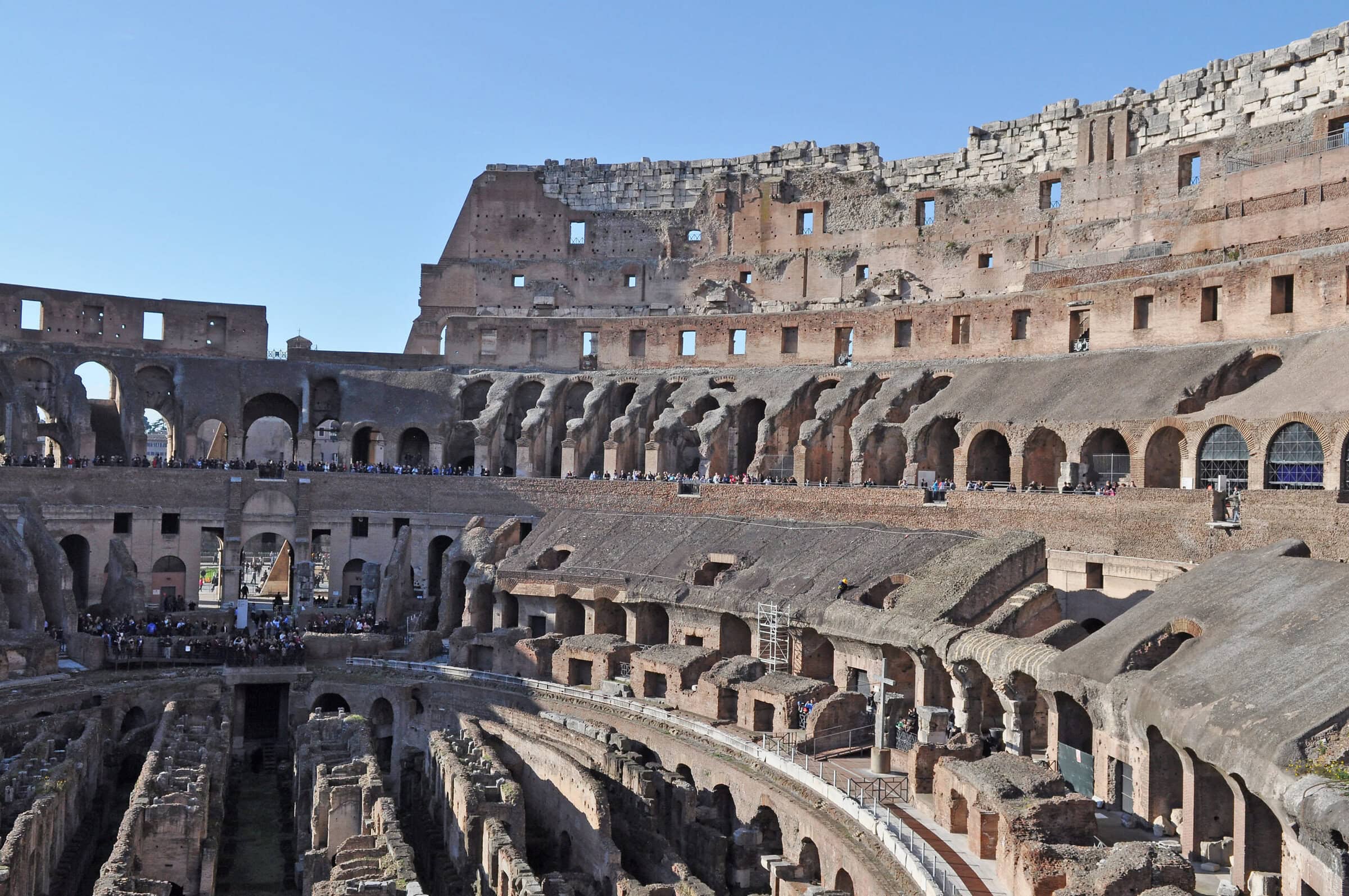
[Image above] Colloseum von innen. Credit: Marco Verch; Wikimedia CC BY 2.0
Why is it that the newly poured sidewalks in my neighborhood can be so easily fractured by plunging temperatures in the winter and wayward tree roots in the spring… yet an ancient structure like the Pantheon remains impressively intact thousands of years post-construction?
We’ve investigated the mysteries of ancient concrete before—specifically, how unique crystals prevent crack propagation and bestow strength to ancient Roman concrete, and how scientists are looking to ancient technology to make modern concrete more durable and sustainable.
But the latest research to shed light on the ductility and durability of ancient concrete comes from geophysicists at the Stanford University School of Earth, Energy and Environmental Sciences (Stanford, Calif.) who discovered concrete-like rock deep within a dormant Italian volcano they say could explain how ancient Romans invented the compound used to build structures like the still-standing Pantheon and Colosseum.
In a recent Stanford University video, Tiziana Vanorio, assistant professor of geophysics, explains that the concrete rock—uncovered at the Campi Flegrei volcano near Naples, Italy—is located in the middle of a large caldera (a cauldron-like volcanic feature formed by collapse of land following a volcanic eruption).

Credit: Stanford; YouTube
Vanorio lived in the port city of Pozzuoli, located in the caldera of Campi Flegrei, as a teenager in the 1980s. During that time, she says, “the ground was constantly shaken by microearthquakes, and they were following a period of intense uplift that lasted more than two years.” Yet the surface of the caldera could withstand incredible strain without suddenly cracking.
But how?
Vanorio explains in the video that in the Campi Flegrei caldera there is a caprock—a harder rock that lies overtop a weaker rock layer—that is rich in pozzolana, or volcanic ash specific to the region.
And upon studying the composition of the caprock, Vanorio and her colleagues also noticed that the caprock contained tobermorite and ettringite—fibrous minerals that are also found in manmade concrete, including ancient Roman concrete.
“Actually, Romans engineered their concrete by using the pozzolana from Pozzuoli and mixing the pozzolana with lime. The Romans used this concrete to build the Pantheon and the Colosseum—but they also shipped the pozzolana throughout the Mediterranean, making possible the construction of several harbors,” says Vanorio.
Once Vanorio and her colleagues found tobermorite and ettringite in the caprock at Campi Flegrei, the question was: Where does the lime come from?
“At that point we decided to analyze the rocks that are deeper in the caldera, and, by analyzing those rocks, we discovered that those rocks contain graphite and a mineral called actinolite,” says Vanorio.
“The actinolite was the key to understanding all of the other chemical reactions that had to take place to form the natural cement at Campi Flegrei,” Waruntorn Kanitpanyacharoen, a postdoctoral associate of Vanorio’s who is now at Chulalongkorn University in Thailand, says in a Stanford press release.
Vanorio explains that as carbon dioxide mixes with calcium carbonate and hydrogen in the deep rock layers, it causes a chemical reaction that produces several compounds, one of which is calcium hydroxide or hydrated lime, that travels up to shallower depths through circulating geothermal fluids to react with the pozzolana-rich rock layer—which transforms that layer into concrete-like rock.
“Tobermorite and ettringite form a very intricate network of fibers. The caprock of Campi Flegrei—because of the network of fibers—is able to withstand much larger deformation without immediately breaking,” concludes Vanorio.
The scientists think their discovery could help engineer more durable and resilient concrete formulations. “There is a need for eco-friendly materials and concretes that can accommodate stresses more easily,” Vanorio says in the release. “For example, extracting natural gas by hydraulic fracturing can cause rapid stress changes that cause concrete well casings to fail and lead to gas leaks and water contamination.”
The paper, published in Science, is “Rock physics of fibrous rocks akin to Roman concrete explains uplifts at Campi Flegrei Caldera” (DOI: 10.1126/science.aab1292).
Author
Stephanie Liverani
CTT Categories
- Cement
- Construction
- Education
Spotlight Categories
- Member Highlights


